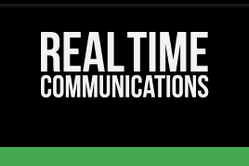
It’s 2016, and We Still Lack Preference for Virtual Meetings. Here’s Why.
PREVIOUSLY PUBLISHED TO TMC NET’S REAL TIME COMMUNICATIONS
With the mobile workforce revolutionizing businesses, both small and large, it’s becoming more conventional to meet our clients and business partners for a quick chat over the wire. While it’s pretty cool to think back to where we were just ten years ago, we’re still not as far as we would think.
In fact, GFK, a firm dedicated to market research in Technology, reveals that only a quarter of U.S. consumers are regularly engaging in digital interaction and consider it just as good as being face-to-face. Overseas consumers reflect similar sentiments.
Globally, women are more apt to welcoming virtual interactions than men. In the United States, it’s the men, who more strongly agree with the fact that meeting face to face is “just as good.”
While it is true that nothing compares to human interaction, one can argue that with collaborative tools, productivity is actually maximized through evolved technologies and real-time communications. One could also argue that corporate dollars are being saved, where they previously splurged on luxurious business trips, both cross-country and cross continental.
Not so surprisingly, only 20-30 percent of all consumers completely disagree. This leaves a majority of overall consumers indifferent. They simply consider it convenient and not a preferred method of communication.
Also not surprisingly, it’s the Millennial and Gen-X consumers are more positive about virtual communications than are the more senior of professionals. Actually, with Gen-X crowds being the largest group of consumers in digital media, it makes sense.
Millennials, while many agree that virtual interactions are “just as good” are more of the adventurous crowd. They’re more social. They are also ultra-sensory, so while digital interaction is amazing, the five senses call for more.
The type of consumer being identified is very important in consideration of this topic. After all, 32-percent of Internet users were reported to be content with finding a lifelong partner through online dating. This number has since increased with the acceptance of virtual communications in every day life.
Some consider business relationships a marriage of two companies, it would only make sense the same would be true amongst business professionals. Perhaps when it comes to money, we are less “open” than when it comes to matters of the heart. We can be over protective, especially when more than just our heart is at stake. It’s the reputation of the business. It’s the funding of our next project. It could be the end of our career.
This may reflect those professionals indifferent to acceptance and preference. They might actually prefer real-time communication and virtual meetings for increased productivity and convenience in the work environment. Confidence in this method, however, may be lacking. Perhaps, empowerment is key to increasing preference amongst the business community; and one day, it really will be just as good.



